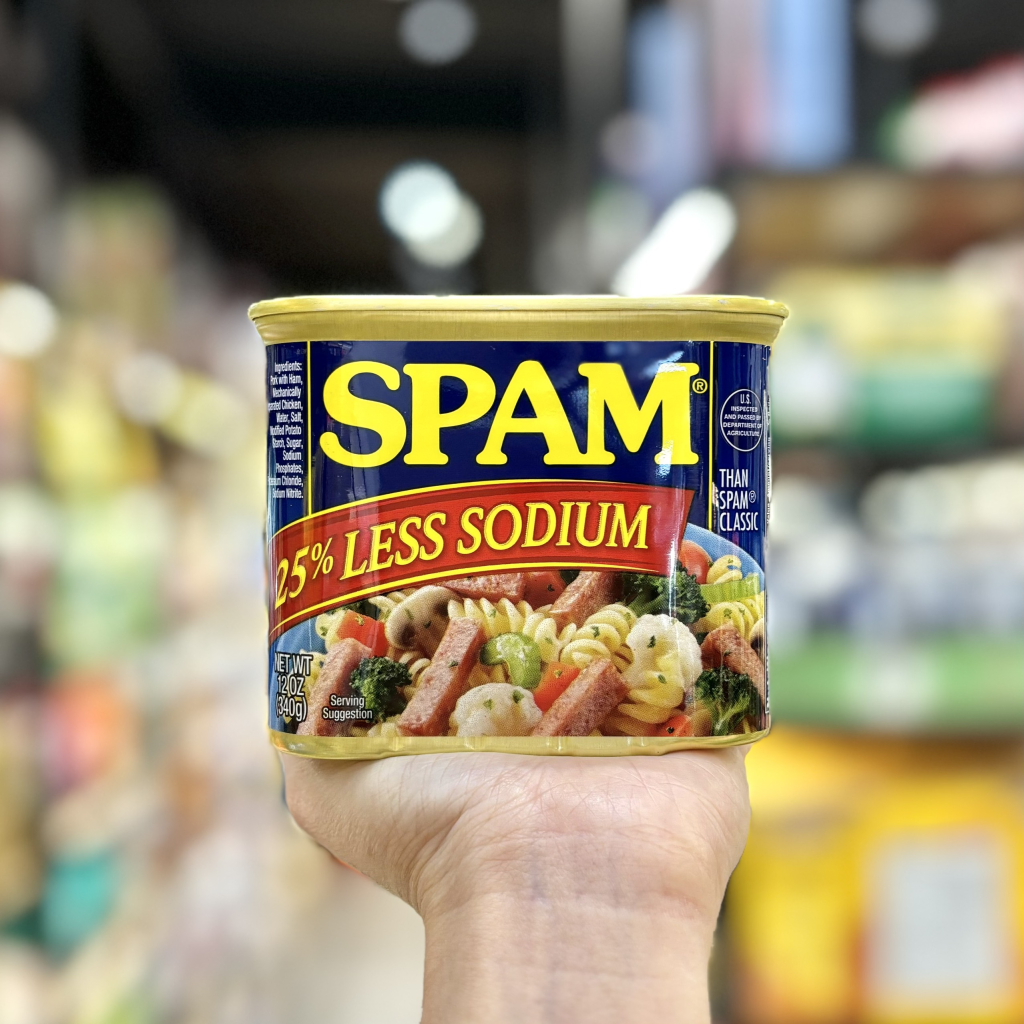If you’ve ever opened your grandparents’ pantry, chances are you’ve seen that blue-and-yellow can staring back at you—SPAM. Whether you love it, avoid it, or are just plain curious, SPAM has a reputation that’s both mysterious and oddly nostalgic. But here’s the thing: for all the jokes and memes, very few people actually know what SPAM stands for—or what it’s made of.
Let’s pull back the pop-top and dig into the facts about this iconic canned creation.

What Does SPAM Actually Stand For?
Here’s where things get a little… fuzzy.
Over the years, people have tossed around guesses like “Specially Processed American Meat”, “Shoulder of Pork and Ham”, or even “Salt Preserves Any Meat.” They sound convincing, right? But Hormel, the company behind SPAM, has kept the official meaning elusive.
One popular story claims the name came from a 1937 naming contest. Supposedly, Ken Daigneau, the brother of a Hormel executive, suggested “SPAM” as a blend of “spiced ham.” He won $100 for the idea—which, at the time, was a pretty sweet deal.
Company founder Jay Hormel later said that the name was perfect because it was short, catchy, and—let’s be honest—a little weird in a memorable way.
Video: What Does SPAM Stand For?
What’s Actually Inside a Can of SPAM?
Despite all the rumors and urban legends, SPAM’s ingredient list is shockingly simple.
Here’s what you’re really getting:
- Pork (with ham)
- Water
- Salt
- Potato starch
- Sugar
- Sodium nitrate
That’s it. No mystery meat. No unpronounceable chemicals. No secret additives. Just a handful of ingredients blended, sealed, and cooked to perfection.
Hormel even points out that potato starch helps bind the meat and prevent it from becoming too watery, while sodium nitrate preserves color and freshness.
SPAM’s Rise to Fame: From Depression-Era Staple to Global Icon

SPAM wasn’t just a quirky food invention—it was a solution to a real problem. During the late 1930s, affordable meat was hard to come by. SPAM filled that gap with a product that was shelf-stable, inexpensive, and ready to eat.
Then came World War II.
During the war, SPAM became a lifesaver. It was easy to transport, required no refrigeration, and could feed soldiers far from home. Over 150 million pounds of SPAM were shipped overseas during WWII.
By the time the war ended, SPAM wasn’t just an American staple—it was an international symbol of survival and ingenuity.
How SPAM Is Made (And Why It’s Not as Gross as You Think)
Video: What You Should Really Know About Spam
Let’s face it—canned meat gets a bad rap. But the process behind SPAM is actually super straightforward.
Here’s how Hormel makes it:
- Pork and ham are ground together.
- The meat is mixed with the other ingredients for about 20 minutes.
- The mixture is then pumped into cans and vacuum-sealed.
- The sealed cans are cooked, then cooled for roughly three hours.
- Labels are added, and the cans are shipped out.
That’s it. No strange machinery. No Frankenstein process. Just old-school food preservation at its finest.
Why SPAM Continues to Spark Curiosity (and Cravings)
You might wonder—why does SPAM still matter?
The truth is, it’s more than just food. It’s a cultural artifact. It represents resilience, wartime innovation, and a kind of culinary nostalgia you don’t find in many products today.
Plus, in places like Hawaii, South Korea, and the Philippines, SPAM has cult status. It’s served in everything from sushi rolls to rice dishes, and it’s a cherished part of modern cuisine.
Love it or leave it, SPAM has staying power—and its popularity continues to grow.
The Internet’s Obsession: Memes, Misconceptions, and Mystery

Let’s be honest. SPAM’s biggest PR boost in the last decade didn’t come from commercials. It came from the internet.
From running gags about its texture to TikToks explaining what the “ring” inside the can is for (spoiler: there isn’t one), SPAM is the subject of endless speculation—and amusement.
But through it all, that blue can has remained unchanged. The label still pops. The taste still divides opinions. And the mystery around the name? It still fuels curiosity like no other food brand can.
Conclusion: The Legacy of a Canned Legend
So, what does SPAM stand for? The truth is, no one knows for sure—and maybe that’s the charm. Whether it means Spiced Ham, Shoulder of Pork and Ham, or Specially Processed American Meat, one thing’s clear: SPAM is here to stay.
With just six ingredients, a wartime legacy, and global fanfare, this humble can has managed to do something few foods ever accomplish—it became a pop culture icon.
Next time you spot it in the store or on your plate, don’t just see it as “mystery meat.” See it for what it really is: a culinary classic that earned its place in history, one salty, savory bite at a time.Công cụ


